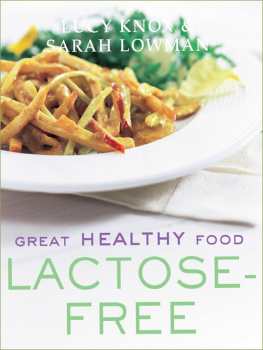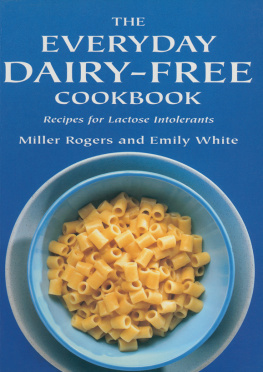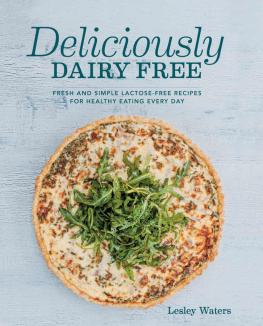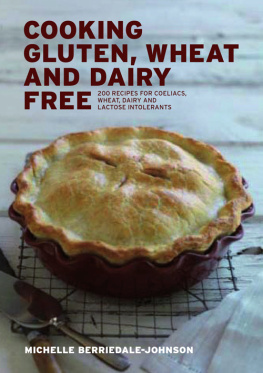First published in 2000 in the United Kingdom by
Carroll & Brown Limited
Winchester House
259-269 Old Marylebone Road
London NW1 5RA
Managing Art Editor Adelle Morris
Editors Salima Hirani, Caroline Uzielli
Photographers Richard Kolker, David Murray
Text copyright Lucy Knox and Sarah Lowman 2000
Illustrations and compilation copyright Carroll & Brown 2000
A CIP catalogue record for this book is available from the British Library.
ISBN 9781907952708
The moral right of Lucy Knox and Sarah Lowman to be identified as the authors of this work has been asserted in accordance with the Copyright, Designs and Patents Act of 1988.
All rights reserved. No part of this publication may be reproduced in any material form (including photocopying or storing it in any medium by electronic means and whether or not transiently or incidentally to some other use of this publication) without the written permission of the copyright owner, except in accordance with the provisions of the Copyright, Designs and Patents Act of 1988 or under the terms of a licence issued by the Copyright Licensing Agency, 90 Tottenham Court Road, London W1P 9HE. Applications for the copyright owners written permission to reproduce any part of this publication should be addressed to the publisher.
CONTENTS
Introduction
Ive always loved food and cookery and, at the age of 25 I was a complete foodie both my personal and professional lives (I was Cookery Editor of Woman & Home magazine) were largely about cooking, eating and entertaining. That was when I developed an intolerance to lactose.
Rather than deprive myself of tasty meals, I became determined to learn how to cook delicious dairy-free meals that my family would be happy to eat on a day-to-day basis, and that dinner guests would enjoy, hopefully without even noticing the lack of dairy produce. I rose to this irresistible challenge and set about experimenting with new ingredients and trying out new approaches to all my favourite recipes. A little imagination and effort brought many wonderful rewards. Before long, I had discovered hundreds of new and delicious recipes and adapted my old ones, and I had a whole new dairy-free diet that I could share with my family and friends. The recipes here are the fruits of my efforts which I hope you will enjoy, whether you or a family member is lactose-intolerant.
LACTOSE INTOLERANCE
Before my condition arose, I had always assumed that lactose intolerance was hereditary. This can be true, but in fact, it can also be triggered off at any stage of your life for a variety of reasons. In my case, I was struck down with salmonella poisoning from a bad egg (an occupational hazard!), which then sparked off the intolerance.
Lactose is a white crystalline sugar present in the milk of humans, cows, sheep and goats. Intolerance is caused when there are insufficient amounts of an enzyme called lactase in the small intestine which allows your body to digest lactose efficiently. If lactose is not digested properly, it causes very painful gastric symptoms. The only cure is, initially, to cut out all dairy produce from your diet in order to allow your body to recover fully. The good news is that after a sufficient rest period of about a month or so, many sufferers can once again enjoy a limited amount of dairy produce. Doctors advise a slow reintroduction of lactose into the diet, starting with those foods which contain low levels of lactose, such as breads, cereals, fermented yogurt and hard cheeses. Some people find that after this initial rest period and gradual reintroduction of such foods, their bodies are even able to cope with a little bit of milk.
Recent research shows that it is far better to reintroduce dairy produce slowly into the diet than to eliminate it for good, which risks the development of other problems caused by a low calcium intake. Nevertheless, your body may never tolerate the levels of dairy foods that it once did. Therefore, it is necessary and vital to your health to keep to a predominantly lactose-free diet, so this book should be helpful for many years to come!
FOODS TO EAT FREELY
Build your diet around the following items:
All fresh vegetables especially green vegetables which contain calcium.
All fruits fresh and dried.
Seafood, poultry and lean meats .
Pasta, potatoes, rice .
Pulses and nuts .
Breads and cereals ethnic breads, including French, Italian, pitta, rye, bagels, shredded wheat, porridge oats.
Milk-free substitutes coconut milk, soya and tofu-based cheese, yogurt, milk and margarine.
Soups broth-based and bouillon
Condiments including mustard mayonnaise, ketchup, jams and honey.
Cakes air cakes.
Confectionery dark chocolate, marshmallows, licorice and fruit candies.
FOODS TO WATCH OUT FOR
Those items not obviously containing lactose:
Baked goods croissants, breads, muffins, cakes, biscuits, pastry (not filo), doughnuts, crackers.
Sauces often based on butter and milk, such as white sauce and custard.
Soups many are milk-based.
Processed foods meats such as salami often contain lactose.
Egg dishes pancakes and omelettes (often contain cheese).
Miscellaneous salad dressings, milk chocolate (plain is fine), ice cream.
Medicines, prescriptions and vitamin supplements often listed as sugar on the packet but thousands contain lactose.
FOODS TO AVOID
Milk all types, including condensed, evaporated, goats and sheeps milk and buttermilk.
Butter/margarine all types.
Cheese all types, including cream cheese and cottage cheese.
Cream and yogurt all types.
Milk proteins (on ingredients list) whey, lactoglobulin, casein, lactalbumin, sodium caseinate.
NUTRITIONAL KNOW HOW
Cutting out dairy produce eliminates the main sources of calcium and vitamin D. It is, therefore, vital to consume other calcium-rich foods as well as the recommended daily allowances of vitamins A, C and D, phosphorus, magnesium and potassium, all of which aid the absorption of calcium. Plenty of exercise along with a generally healthy lifestyle are also beneficial.
Calcium canned salmon, mackerel and sardines, tofu, prawns, kale, spinach, brussels sprouts and broccoli.
Vitamin A carrots, spinach, beans, broccoli, sweet potatoes, peaches and dried apricots.
Vitamin C citrus fruits, broccoli.
Vitamin D added to milk products such as margarine, and produced in the body when exposed to sunlight, so unless you spend plenty of time outdoors it may be necessary to take a supplement such as cod liver oil.
Phosphorus nuts, sardines, eggs, chicken, meat and red beans.
Magnesium nuts, red and white beans, brewers yeast and shredded wheat.
Potassium dried fruits, nuts, avocados, bananas, scallops, chicken, beef and liver.
THE LACTOSE-FREE DIET
As you will see from the recipes in this book, fresh ingredients are the basis of a dairy-free diet. Over the years, I have learned to adapt my shopping and cooking habits to suit a diet that eliminates dairy products. For example, preparing delicious meals with sauces became far easier once I discovered the endless uses of the humble tomato. I now use a variety of simple and tasty tomato-based sauces in place of those based on cream, milk or cheese. Pastry neednt be a problem either, as it can be made easily using oil. Filo pastry, readily available in supermarkets, is a particularly good dairy-free ingredient for both sweet and savoury dishes. Alternatively, a scone-based dough can be used in place of pastry as a substantial topping for pies.







